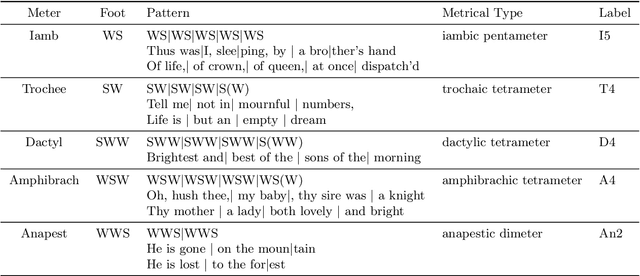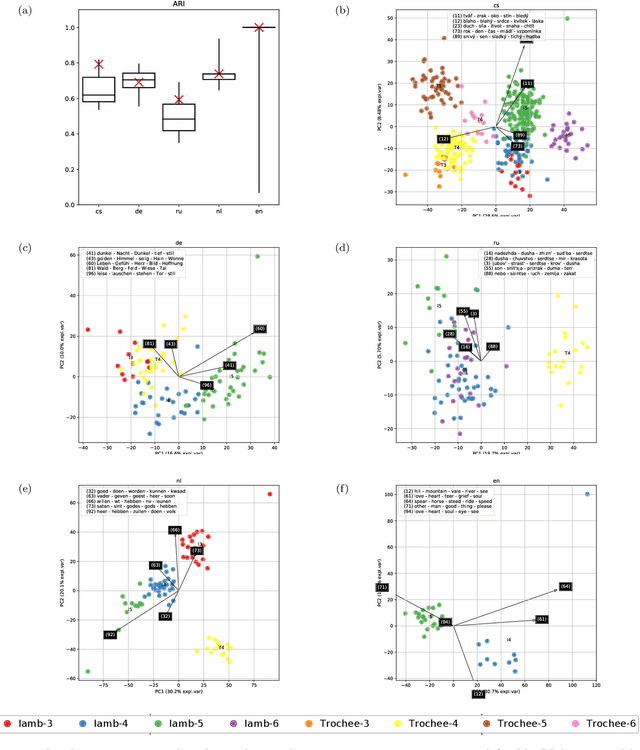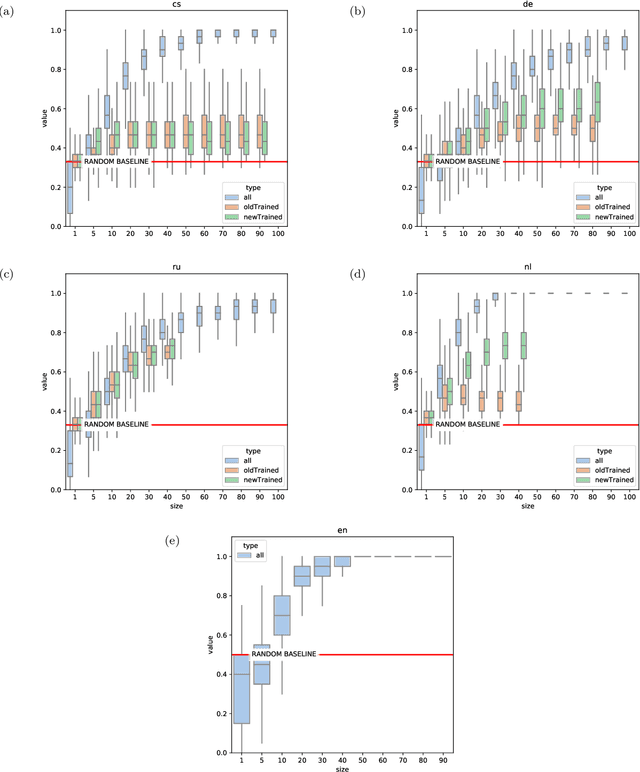Alie Lassche
Semantics of European poetry is shaped by conservative forces: The relationship between poetic meter and meaning in accentual-syllabic verse
Sep 15, 2021



Abstract:Recent advances in cultural analytics and large-scale computational studies of art, literature and film often show that long-term change in the features of artistic works happens gradually. These findings suggest that conservative forces that shape creative domains might be underestimated. To this end, we provide the first large-scale formal evidence of the persistent association between poetic meter and semantics in 18-19th European literatures, using Czech, German and Russian collections with additional data from English poetry and early modern Dutch songs. Our study traces this association through a series of clustering experiments using the abstracted semantic features of 150,000 poems. With the aid of topic modeling we infer semantic features for individual poems. Texts were also lexically simplified across collections to increase generalizability and decrease the sparseness of word frequency distributions. Topics alone enable recognition of the meters in each observed language, as may be seen from highly robust clustering of same-meter samples (median Adjusted Rand Index between 0.48 and 1). In addition, this study shows that the strength of the association between form and meaning tends to decrease over time. This may reflect a shift in aesthetic conventions between the 18th and 19th centuries as individual innovation was increasingly favored in literature. Despite this decline, it remains possible to recognize semantics of the meters from past or future, which suggests the continuity of semantic traditions while also revealing the historical variability of conditions across languages. This paper argues that distinct metrical forms, which are often copied in a language over centuries, also maintain long-term semantic inertia in poetry. Our findings, thus, highlight the role of the formal features of cultural items in influencing the pace and shape of cultural evolution.
 Add to Chrome
Add to Chrome Add to Firefox
Add to Firefox Add to Edge
Add to Edge